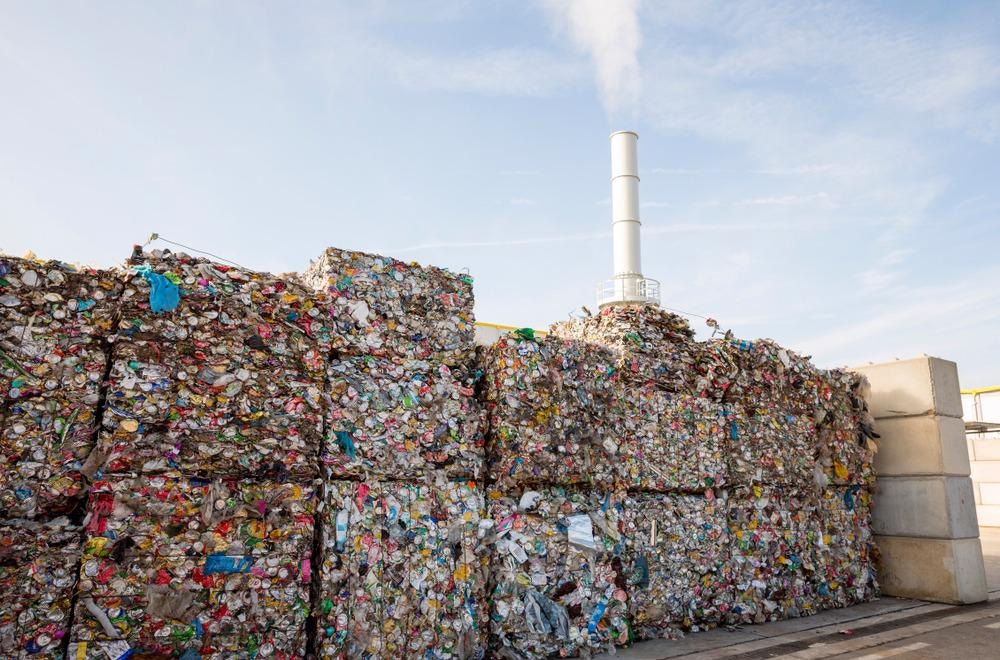A recent study presented in the Utilities Policy journal has explored the viability of the large-scale production of refuse-derived fuels created from municipal solid waste as a means of simultaneously reducing reliance on fossil fuels, meeting increasing energy demands, and addressing the ongoing overproduction of waste in urban areas.

Study: Snapshot review of refuse-derived fuels. Image Credit: Belish/Shutterstock.com
The world’s over-reliance on fossil fuels and the current climate and ecological emergencies have prompted an urgent need to move to a more sustainable future via massive societal change, technical innovation, and a significant shift in approaches to production and consumption.
Modern society relies on the abundant availability of energy. Demand for energy continues to rise in high-income countries, and increasingly, populations without access to the electricity grid are beginning to gain access to this. It is widely recognized and accepted that energy production must be shifted to more sustainable, ideally renewable methods in order to have any chance of meeting necessary targets around greenhouse gas emissions.
Globally, it has been reported that over 2 billion tons of waste are generated annually. For example, an average US citizen generates approximately 1.89 kg of waste per day, a Portuguese citizen generates around 1.25 kg of waste per day, and a Chinese citizen generates approximately 0.49 kg of waste per day.
There are a number of risks associated with the sending of waste to landfills, including the leaching of chemicals and pollutants into soils and groundwater, greenhouse gas emissions, and associated health concerns related to the presence of hazardous materials.
Studies have also suggested that global waste generation will increase up to 70% by 2050. The authors proposed that the fabrication of solid refuse-derived fuel (RDF) from municipal solid waste could offer a potential means of helping meet global energy demands while reducing the amount of waste reaching landfills.
Municipal solid waste is generated daily and in large quantities by households and commercial buildings. This waste is mainly comprised of food waste, paper waste, plastics, and inorganic materials, such as glass or metal scraps.
Further Reading: Magnetic Ink Utilization in Recycling Efforts
Much of this waste is also comprised of synthetic polymers, biomass, and other potentially combustible materials that can be leveraged as an alternative energy source via waste-to-energy systems.
The production of refuse-derived fuel typically begins with municipal solid waste being cleaned and processed to remove recyclables, metals, and non-flammable materials. The remaining material - primarily paper, wood, plastics, and cardboard – can then be turned into an appropriate fuel source, typically via incineration.
The key challenge to developing viable, potentially commercialized refuse-derived fuel stems from the need to ensure this meets relevant technical specifications and standards in terms of energy output, safety and environmental friendliness.
The study aimed to provide a review of the current modes of refuse-derived fuel production, highlighting that these methods depend largely on the composition of the municipal solid waste and the technology available to process this. The authors noted that this is not a new approach however and that there are historic examples of refuse-derived fuels dating back as far as 1876.
The study highlights the amount of waste currently going to landfill rather than being recycled, breaking this down by country and citing income levels as a key factor in countries’ non-recycled waste.
The authors propose that this waste could instead be used to open up a new space in the solid waste management sector, instead of using this waste to generate energy via appropriate thermochemical processes to produce refuse-derived fuels.
Provided that appropriate standards are met, and emissions are minimized, these waste-to-energy applications have the potential to offer a viable alternative to fossil fuel-based power generation methods.
The authors state that economic factors remain a key barrier to the widespread implementation of waste-to-energy applications, however. In order to compete with other forms of power generation, power generated via refused-derived fuels must be more cost-effective than its fossil fuel counterparts.
In Europe, the UK is the largest exporter of refuse-derived fuels, mainly to other European countries such as the Netherlands. Refuse-derived fuel is reported to cost between €80 and €105 per ton, with fees and taxes accounting for between 50% and 60% of these costs.
In countries where it is not possible to complete waste-to-energy processes locally, the authors propose that these taxes represent a barrier to a more international approach to the production of refuse-derived fuel and the disposal of less waste in landfills.
Most notably, the authors state that it is possible to save approximately 200 kg of equivalent CO2 per ton of residual waste by using this in waste-to-energy as a substitute for fossil fuels, rather than sending this to landfills.
In order to fully leverage this potential, there is a great deal of work to be done in terms of government policies, international regulation, and standardization to manage and grow the market for refuse-derived fuels. Tax-based incentives could form a key part of this strategy.
References
José Antonio Mayoral Chavando, Valter Bruno Silva, Luís A.C. Tarelho, João Sousa Cardoso, Daniela Eusébio, Snapshot review of refuse-derived fuels, Utilities Policy, Volume 74, 2022, 101316, ISSN 0957-1787, https://www.sciencedirect.com/science/article/pii/S0957178721001491?via%3Dihub
AZoCleanTech, 2019, Solving Refuse Derived Fuel Problems, https://www.azocleantech.com/article.aspx?ArticleID=850
Disclaimer: The views expressed here are those of the author expressed in their private capacity and do not necessarily represent the views of AZoM.com Limited T/A AZoNetwork the owner and operator of this website. This disclaimer forms part of the Terms and conditions of use of this website.